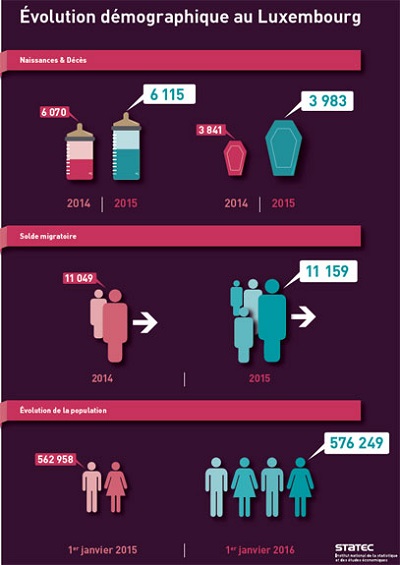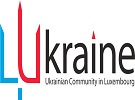
A recent STATEC report published Monday has revealed that on 1 January 2016, the population of Luxembourg stood at 576,429 people.
This latest figure shows that the population increased by 13,291 people in 2015 - a growth that was 80% attributed to net migration, with around 47% of the country's inhabitants holding a non-Luxembourgish nationality. STATEC recorded a positive net migration of 11,159 people, with 23,803 arrivals and 12,644 departures.
In comparison, the number of births seems to have only slightly fluctuated, rising 0.7% from 6,070 in 2014 to 6,115 in 2015. However, Luxembourgish births showed a small decrease of -0.4% during this period, whilst the births of babies of a foreign nationality grew +2.0%. This immigration-led increase in the population has seen the birth rate, or the ratio between births and the average populations, continue to decline from 10.9% in 2014 to 10.7% a year later.
Despite a continued downward trajectory first experienced in the beginning of the 21st century, weddings exhibited strong growth, with 2,052 contracted in Luxembourg
in 2015. 6.8%, or 139, of these were same-sex marriages, predominantly between men (90 against 49 between women). Meanwhile, divorces fell -7.4% from 1,453 in 2014 to 1,345 in 2015.
What has been a continued stable rate of deaths in recent years fluctuated to show an increase of 3.7% from 2014, growing from 3,841 to 3,983. This rise was exclusively attributed to deaths amongst Luxembourgers, which increased by 5.3% to reach 3,184 in 2015. STATEC explained that the number of annual foreign deaths is low (by contrast decreasing 2.3% to 799 in 2015) due to the young age of the externally-born population.
Although the Portuguese continue to represent the largest foreign community, their part in the total population decreased marginally from 16.5% to 16.2% between 2014 and 2016. Conversely, the French community - the second largest foreign one in the country - has seen an increase from 6.8% to 7.2% across the same period. Together, these two communities make up about a quarter (23.4%) of the total population and half (50.1%) of the foreign population. The migratory flow of the three other most commonly-represented nationalities in the Grand Duchy, the Italians, Belgians and Germans, were found down slightly.
Infographic by STATEC








